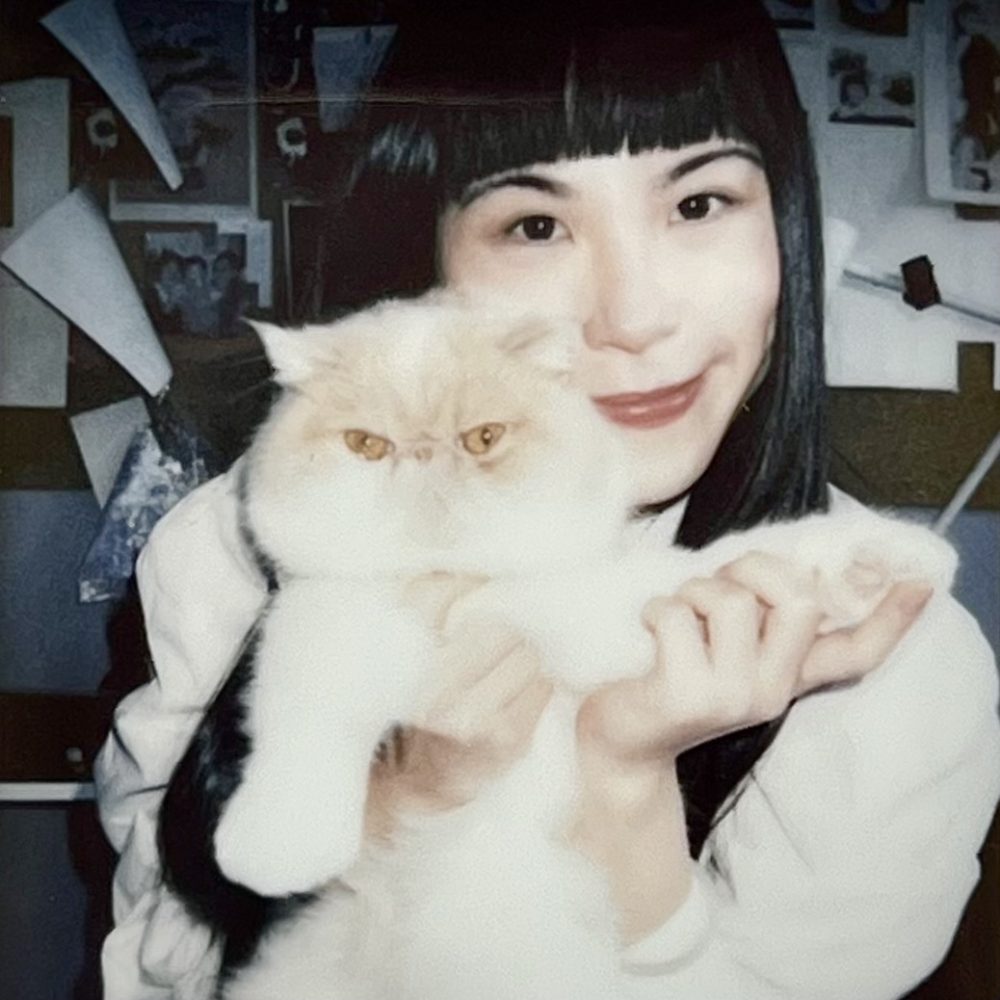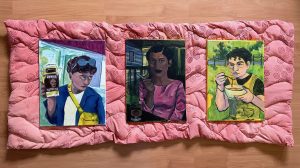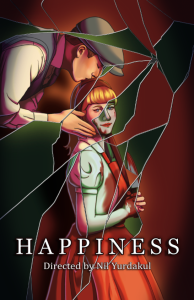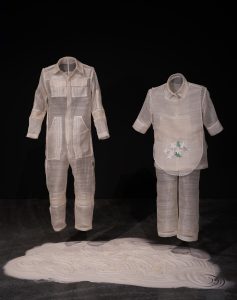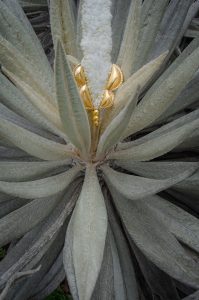Thinking through Crafting
Xiaoyin Luo
See it On Campus: Level 2
Visitor InfoLibby Leshgold Gallery
…
As an artist, my creative practice and research emerge in a time filled with existential crises, where I witness the loss of land caused by the environmental decline and experience the distress from solastalgia. Solastalgia is a term coined by environment philosopher Glenn Albrecht, which describes the distress caused by environmental change impacting one’s sense of place and home. Living in a world that is information-saturated and rapidly transformed, it is challenging to process through this “psychological illness.” In response, my practice of craft has become a navigation tool to approach and engage with this sense of displacement through working collaboratively with materials that I gathered from the land.
…
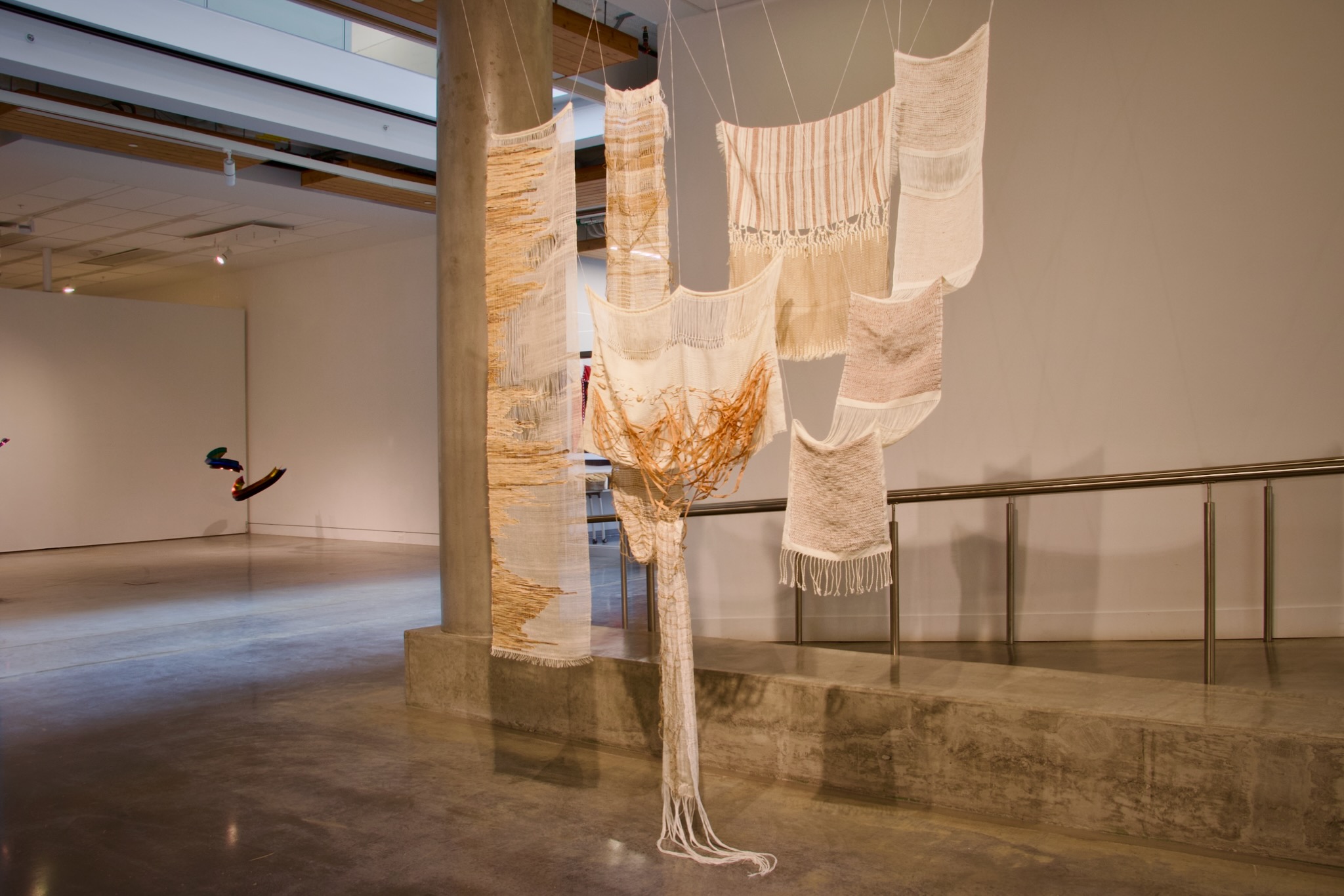
Right: Xiaoyin Luo, Experiential Mapping (installation view), 2023-2024. Woven textile installation with cotton thread, linen thread, handmade washi kami-ito, reed grass kami-ito, Japanese indigo stalk kami-ito, black cotton barks, hand-spun linen thread. Photo courtesy of the artist.
Left: Kevin Orlosky, Title, 2024. Sculpture installation with steel.
…
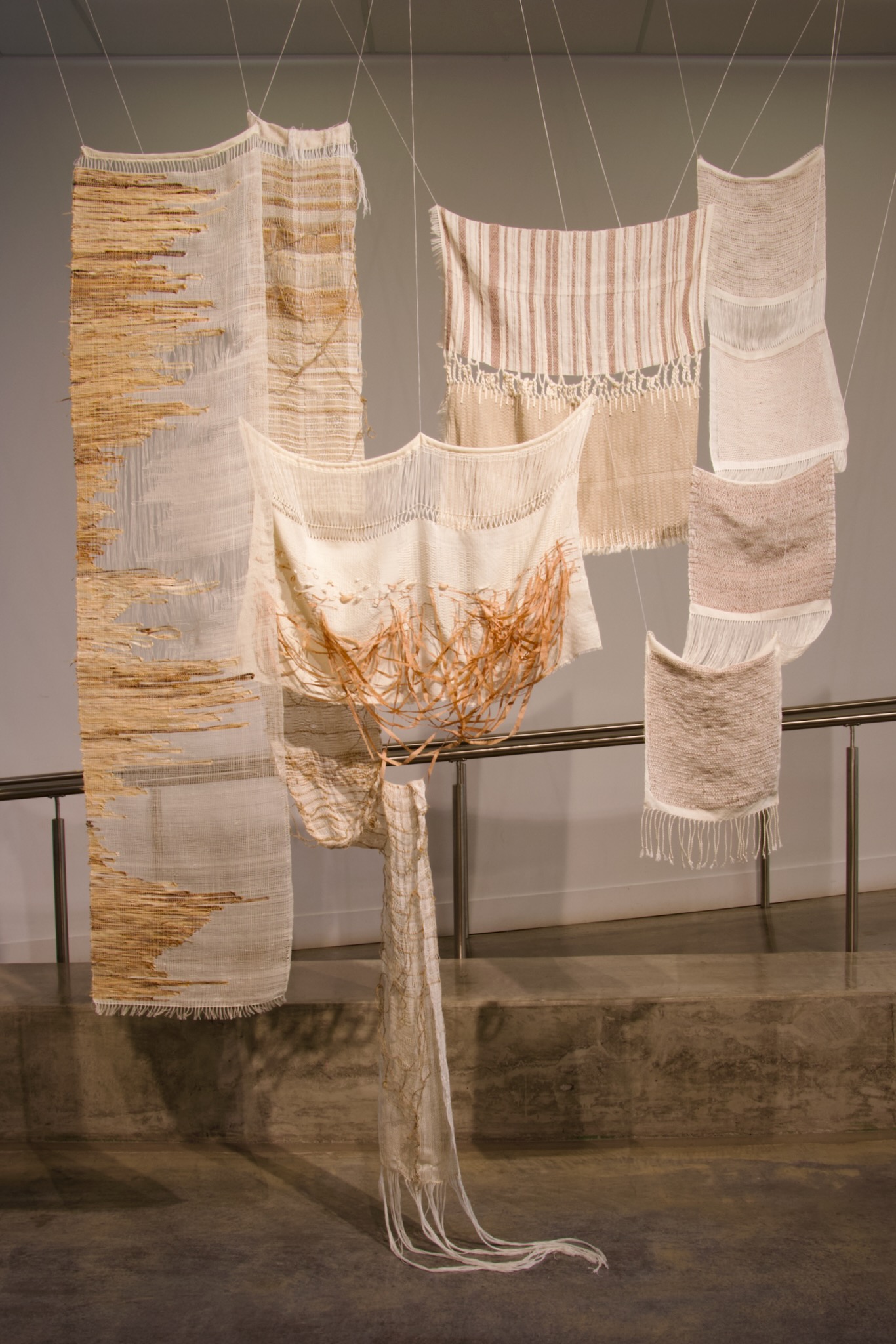
Experiential Mapping is a process-based textile installation based on the material research I conducted during my MFA program. The focus of this work is to showcase the interplay and collaborative results between the artist and the materials. My approach to this installation is based on the idea of flux, thinking about how to live in a world that is constantly shifting. The transformative and collaborative moments in my material research on handmade paper suggested a way to approach and adopt the unfixable state of the current environment.
Xiaoyin Luo, Experiential Mapping, 2023-2024. Photo courtesy of the artist.
…
Through a series of actions and decision-making with natural fibre materials, this installation embodies a variation in texture, the application of weaving techniques and the trace of my body movements. The unfixable gesture of the work is my attempt to shift the audience’s experience from viewing an art object from a distance to engaging with curiosity. Through this textile installation, I aim to offer the audience an insight into my methodology for relationship-building, highlighting the trace of time spent, labour and the correspondence between the maker and the fibres.
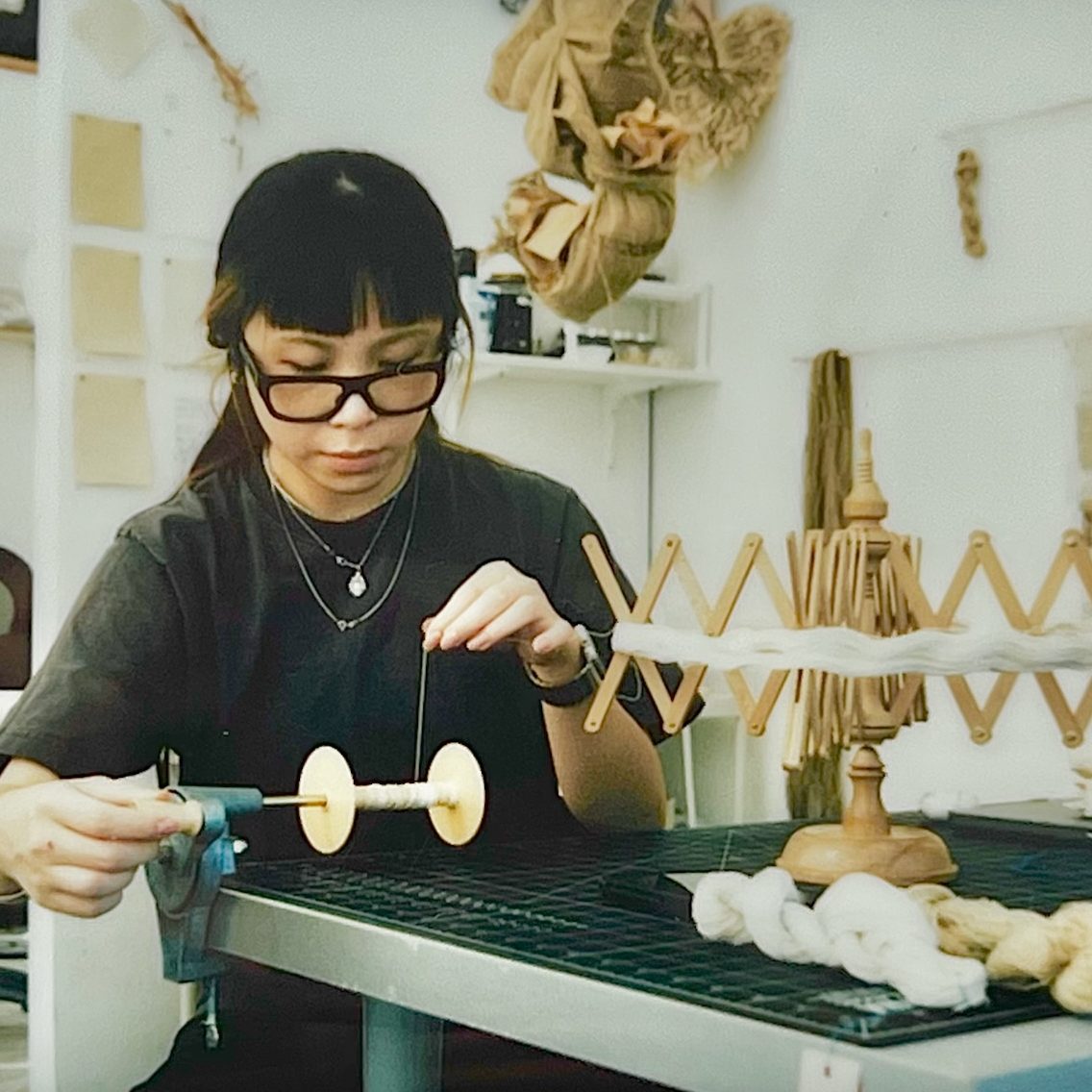
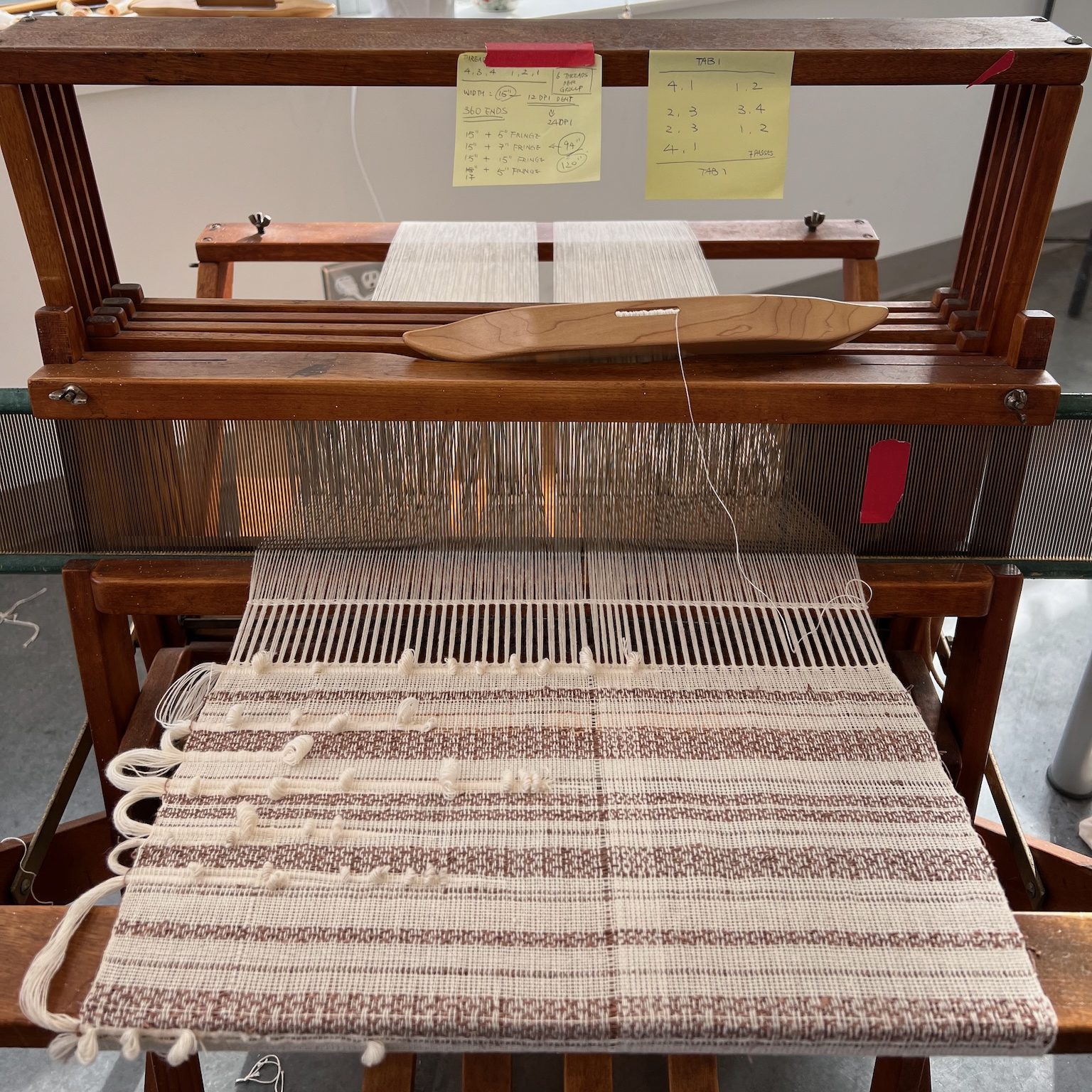
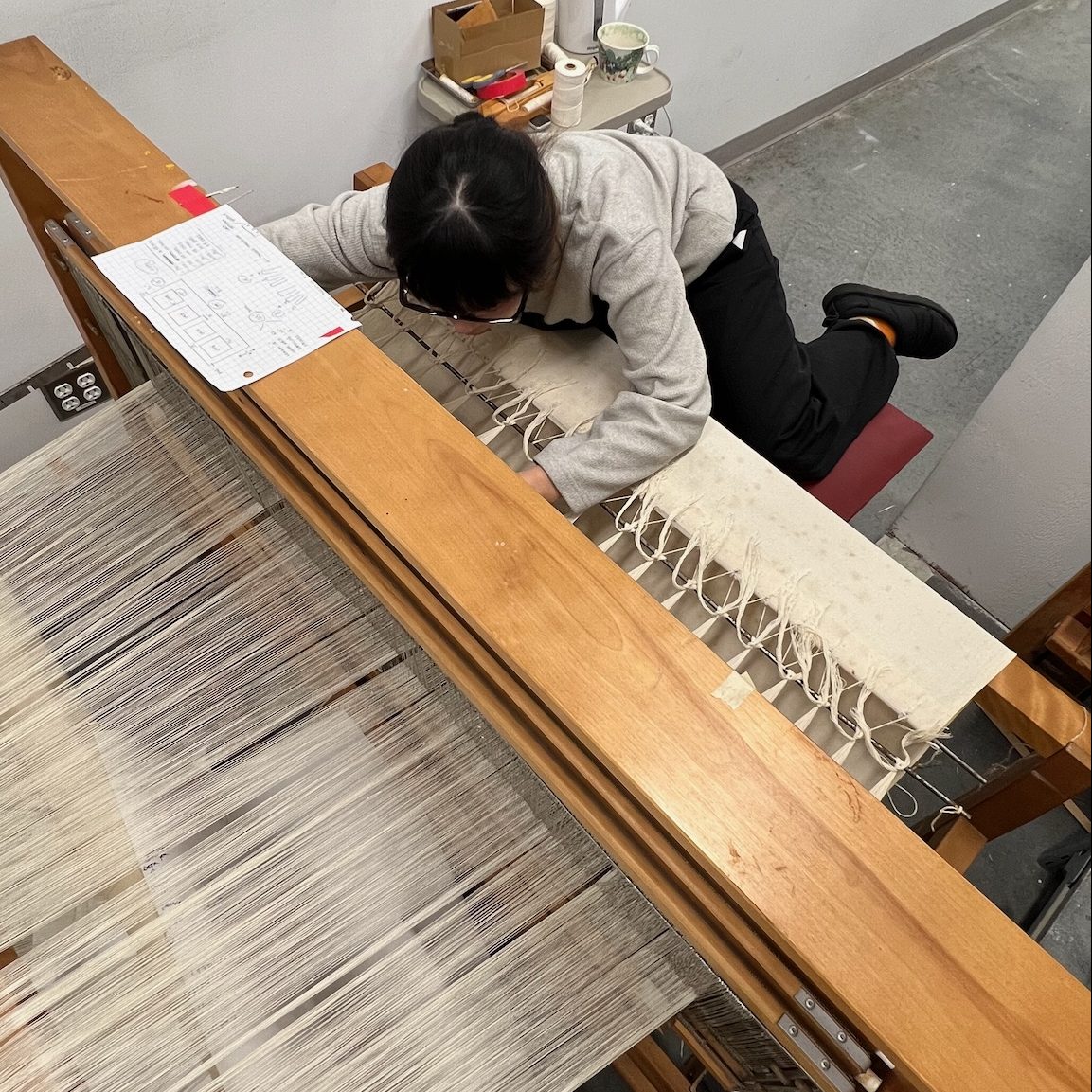
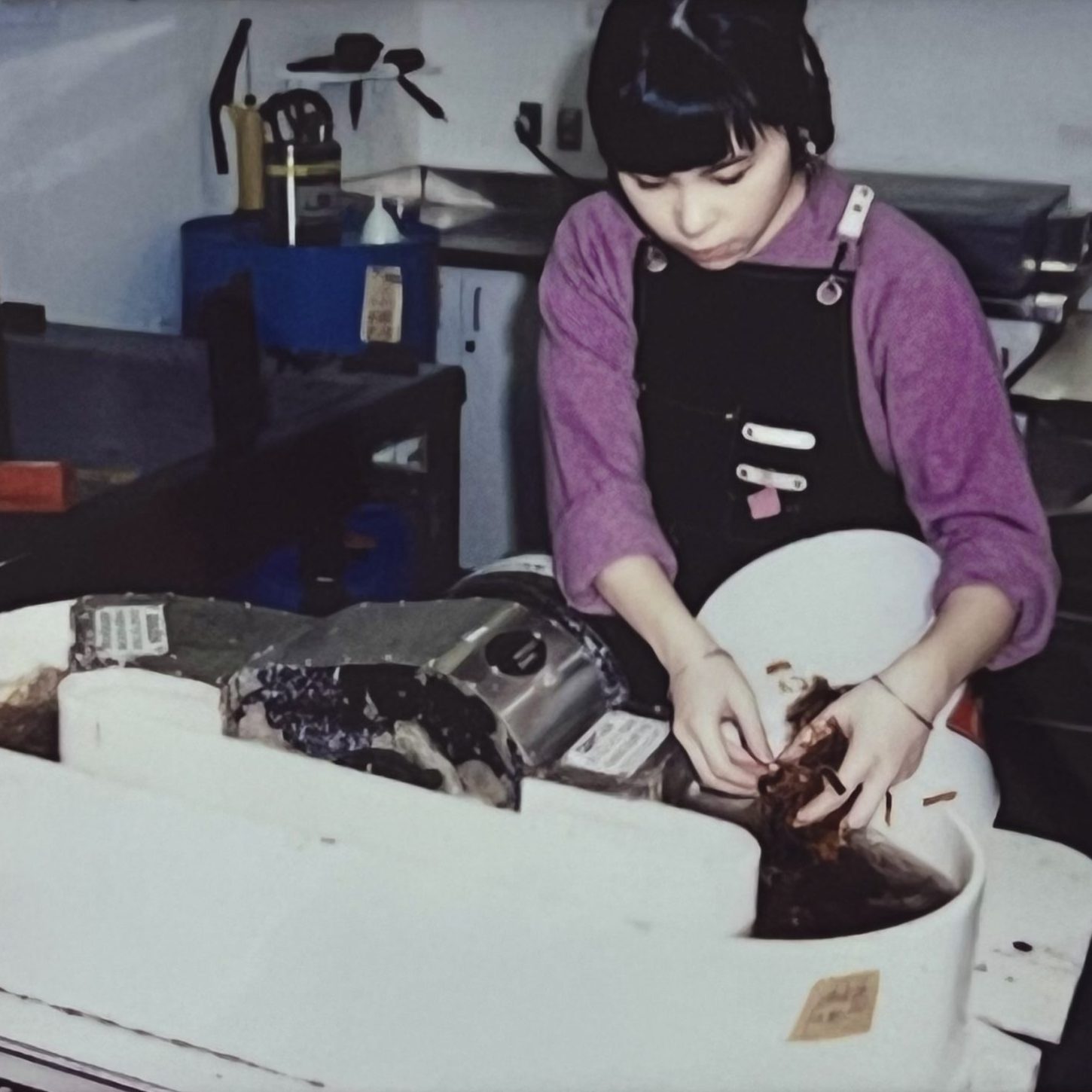
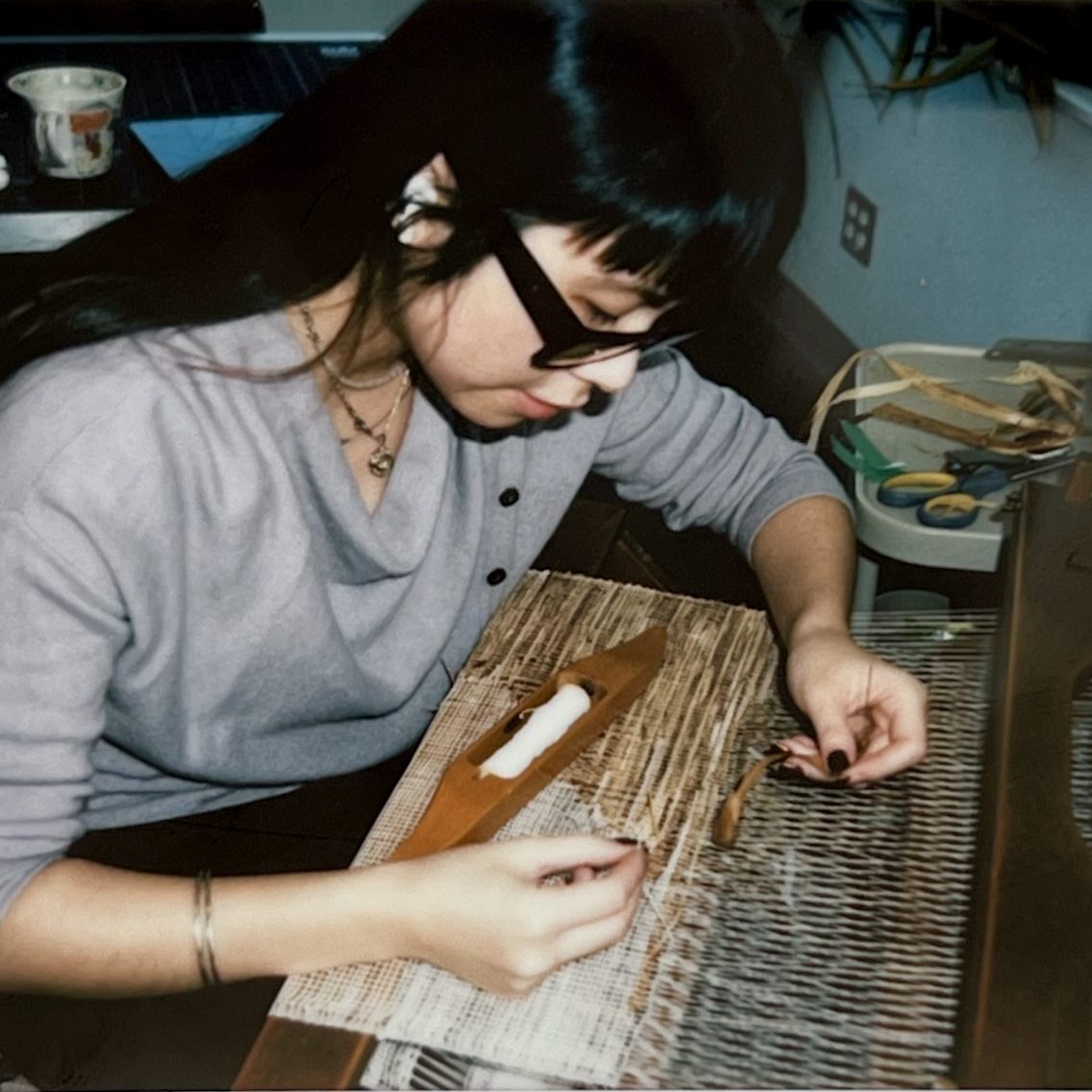
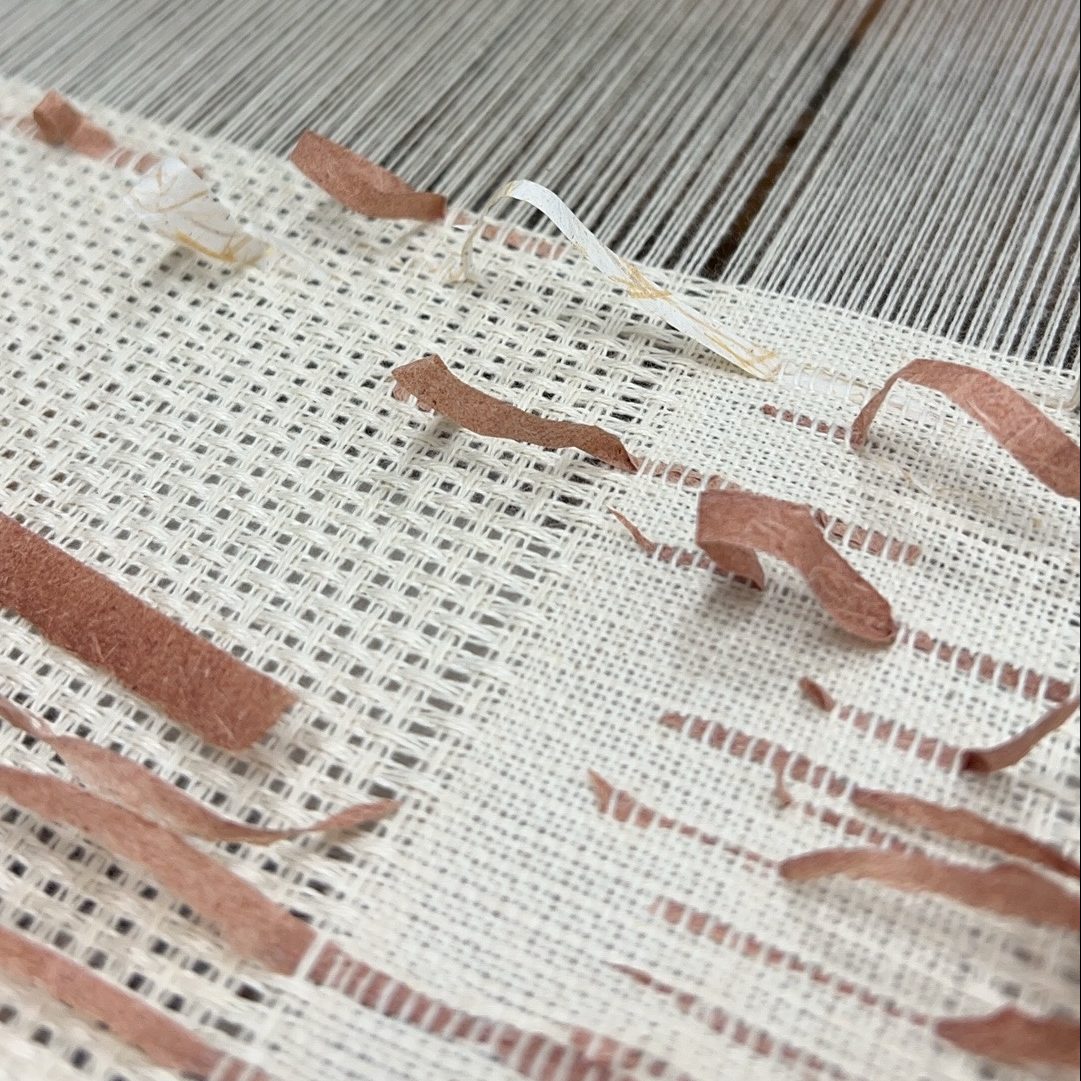
…
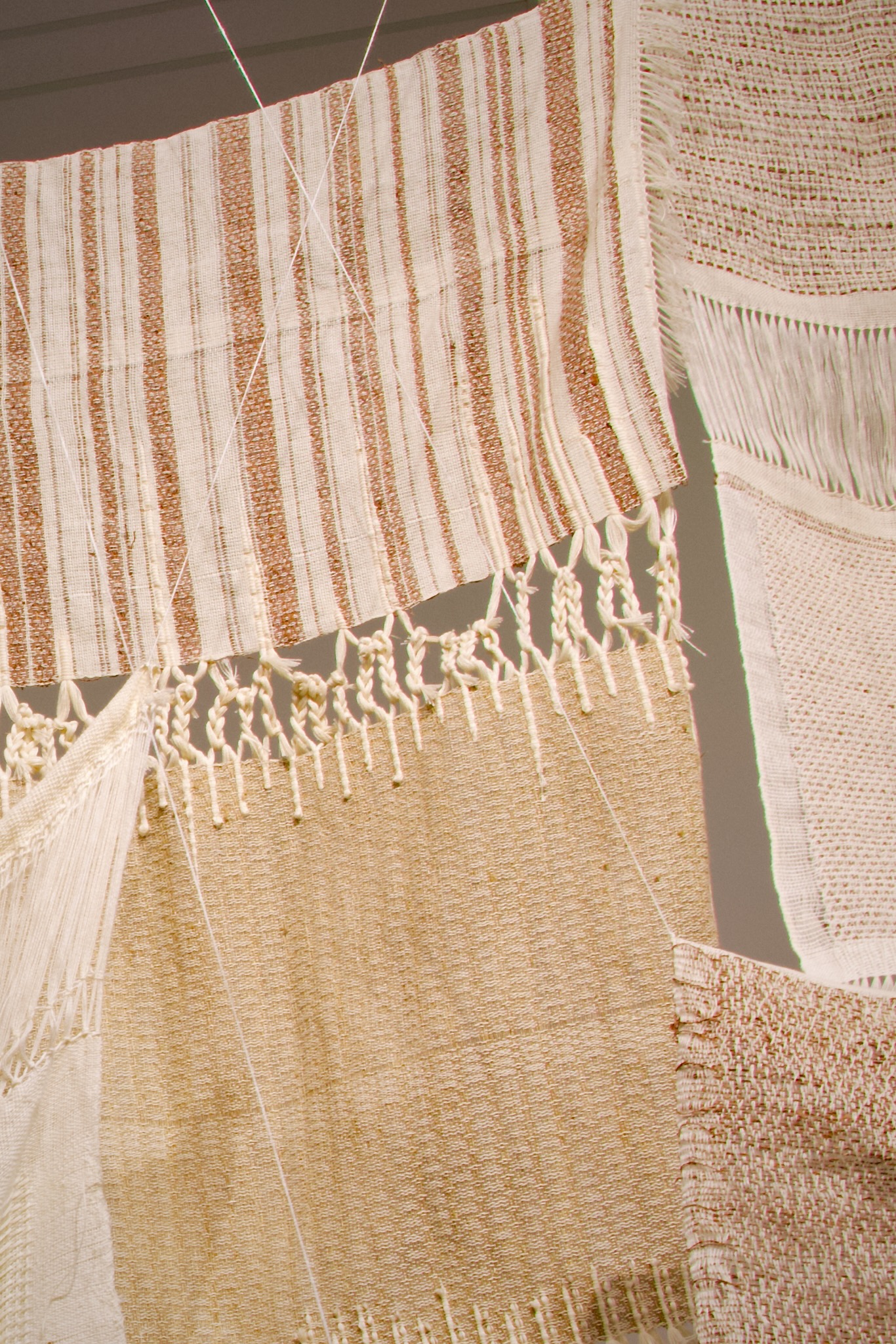
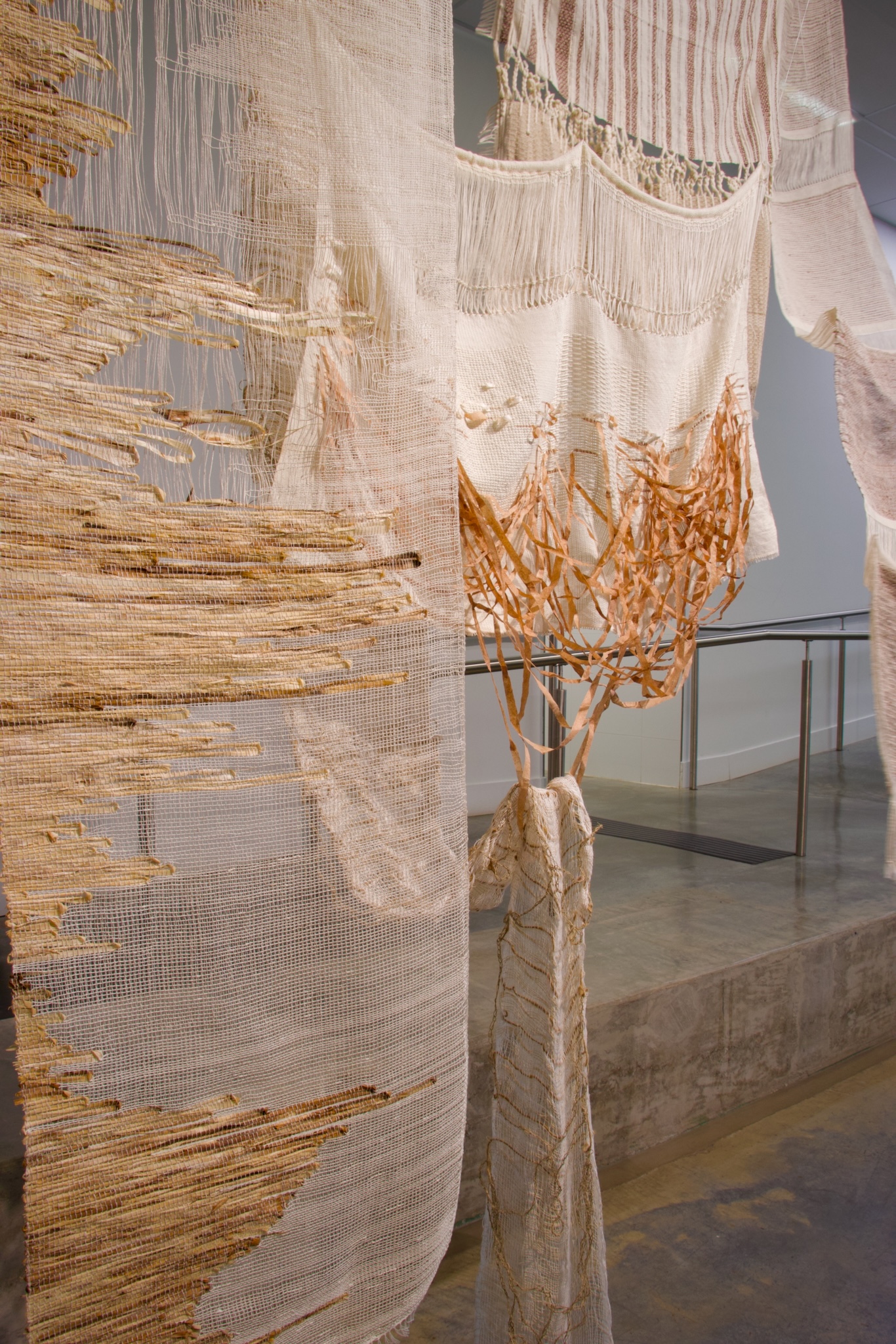
Xiaoyin Luo, Experiential Mapping (detail), 2023-2024. Photo courtesy of the artist.
Xiaoyin Luo, Experiential Mapping (detail), 2023-2024. Photo courtesy of the artist.
…
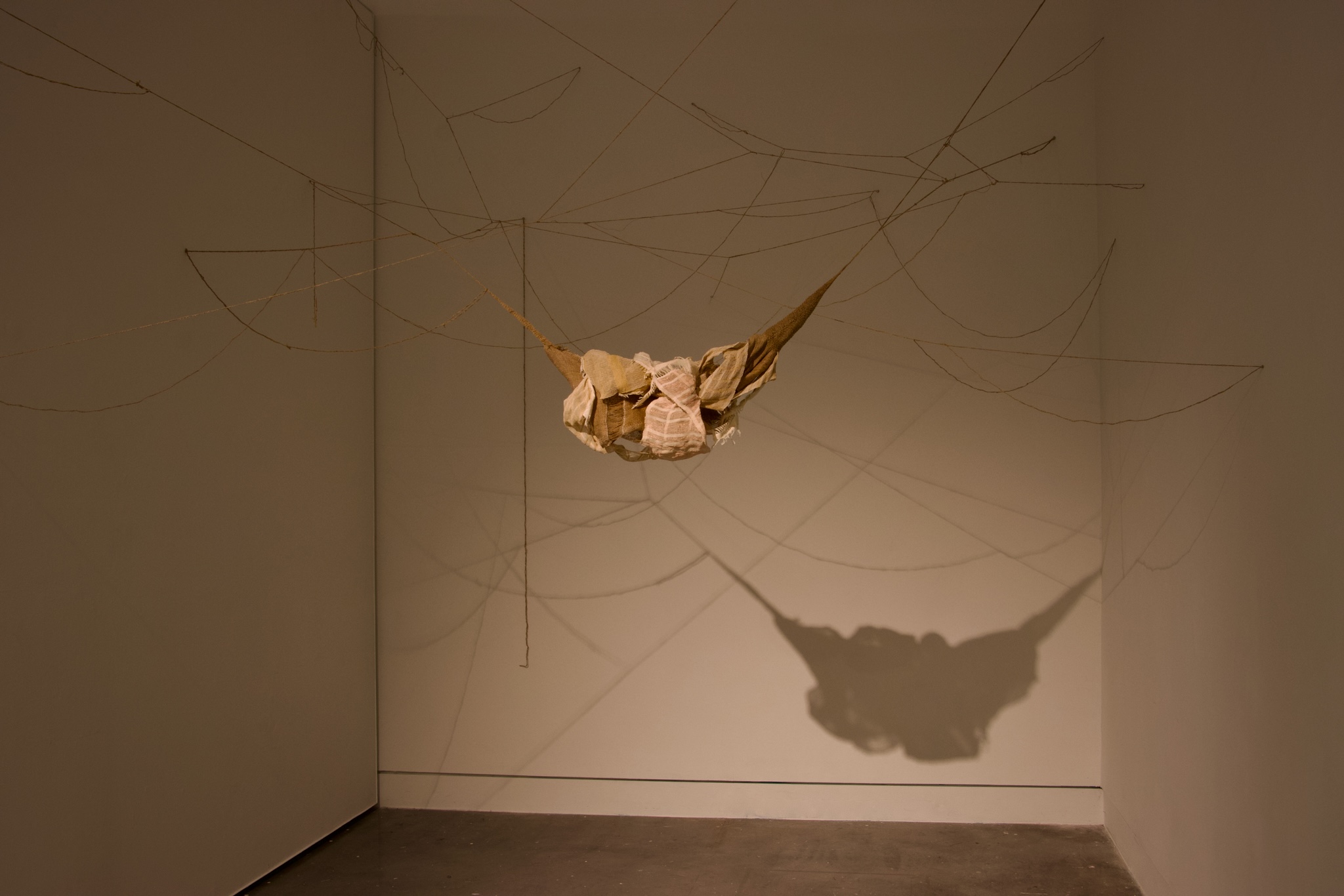
Xiaoyin Luo, Nidification, 2023-2024. Woven textile installation with cotton thread, linen thread, handmade washi kami-ito, reed grass kami-ito, Japanese indigo stalk kami-ito, corn starch. Photo courtesy of the artist.
..
The work Nidification is a woven sculpture that evolved into an installation that grew into the gallery space. After the first layer of structural building back in September 2023, the nest building proceeded as I continued to explore various materials for kami-ito making and applied them to weaving. The word nidification is derived from the Latin — nidificare, meaning to build a nest. The installation assembly mimics the way birds weave their nests and spiders knit their webs in their natural habitat.
..
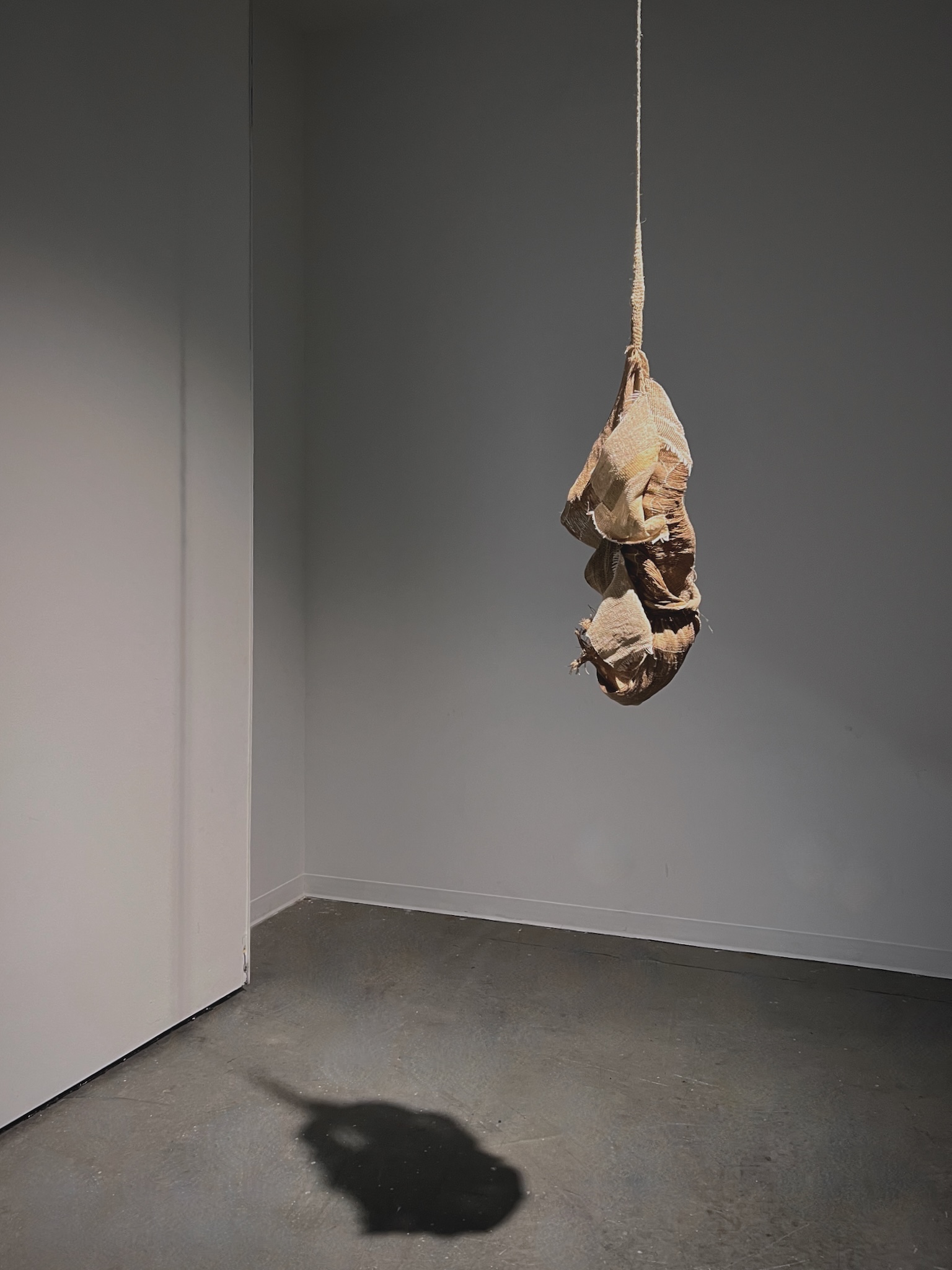
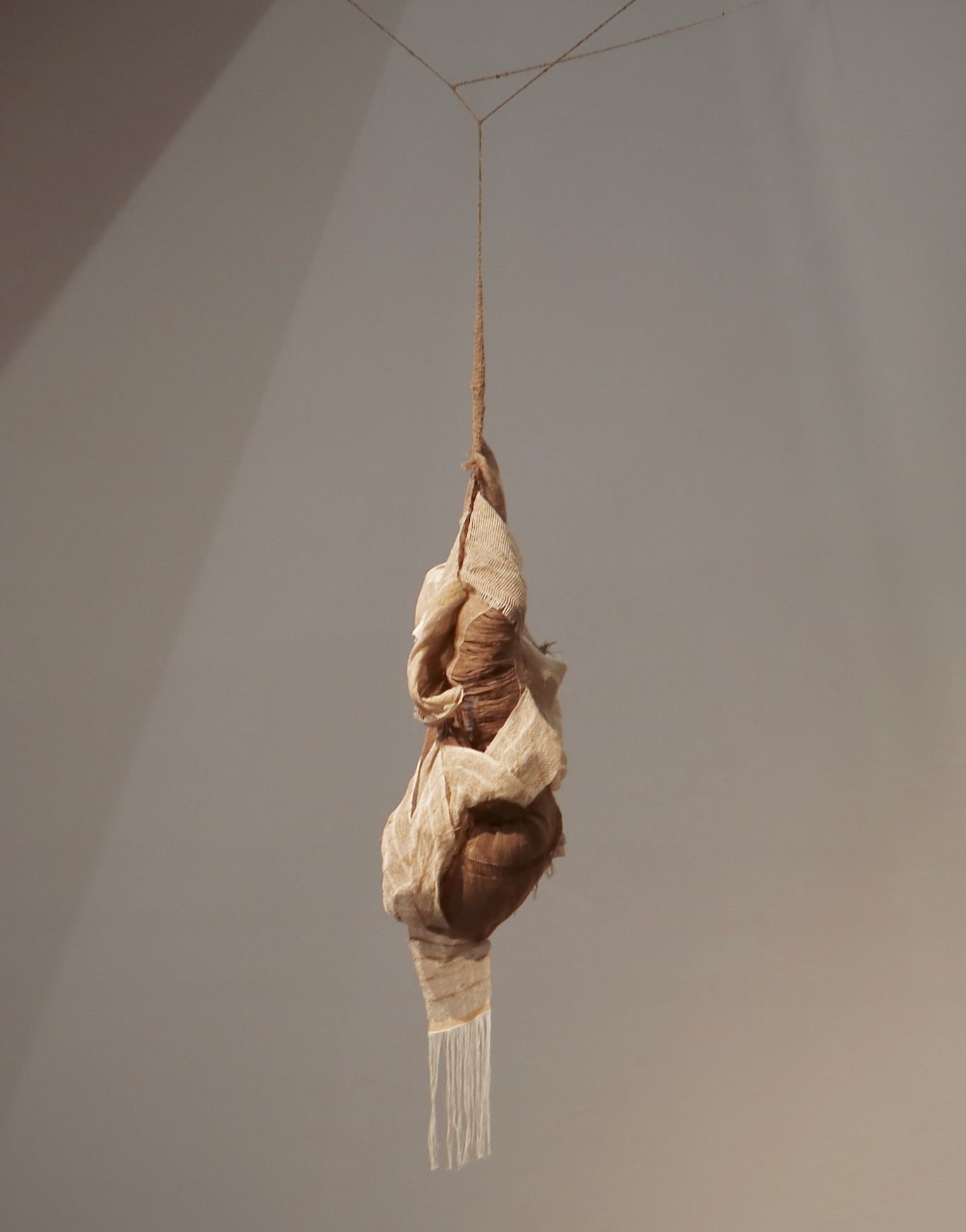
xeeeeee
x
x
x
x
x
x
x
xx
x
x
From left to right: Xiaoyin Luo, Nidification version 1, 2, 3), 2023-2024. All photos courtesy of the artist.
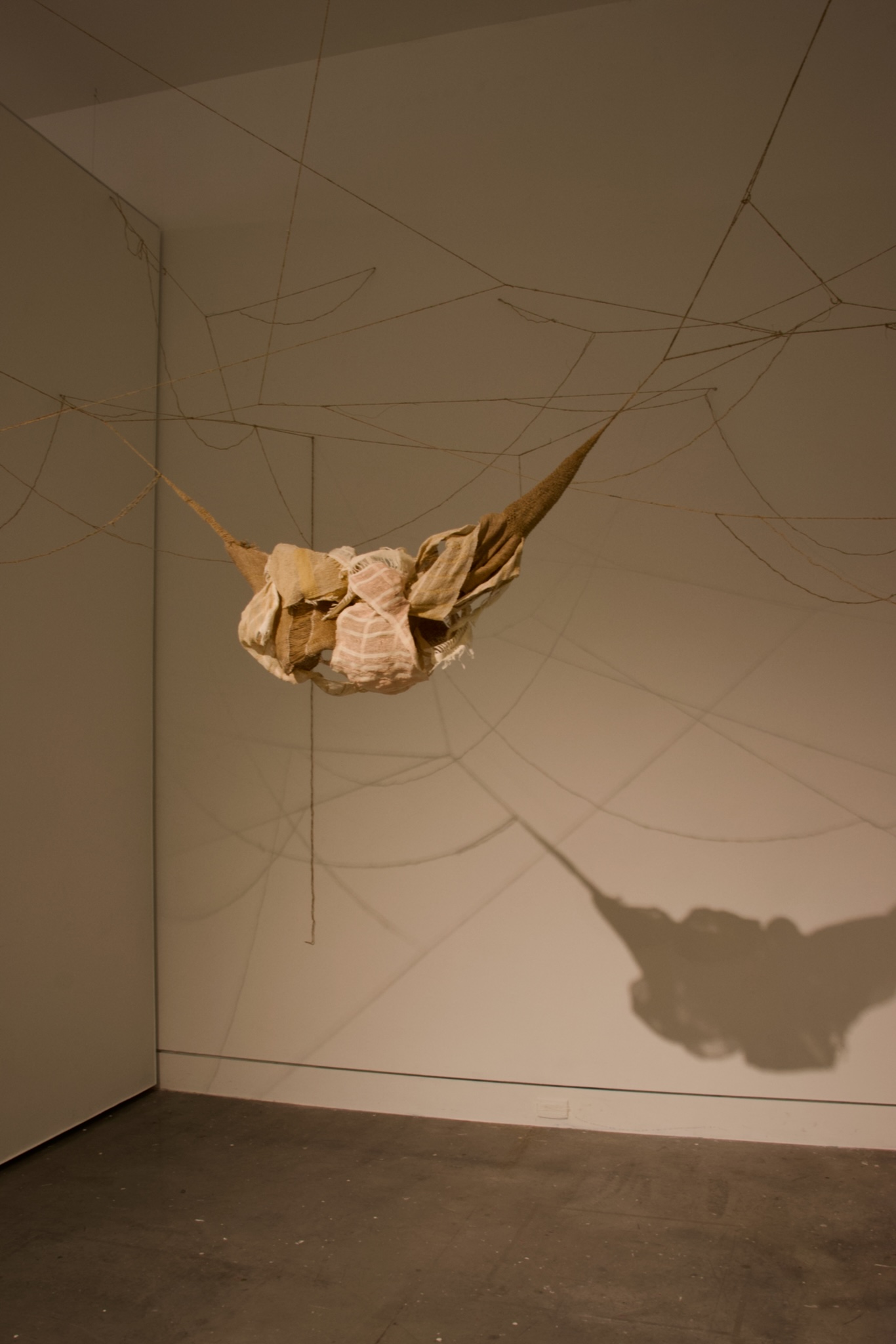
..
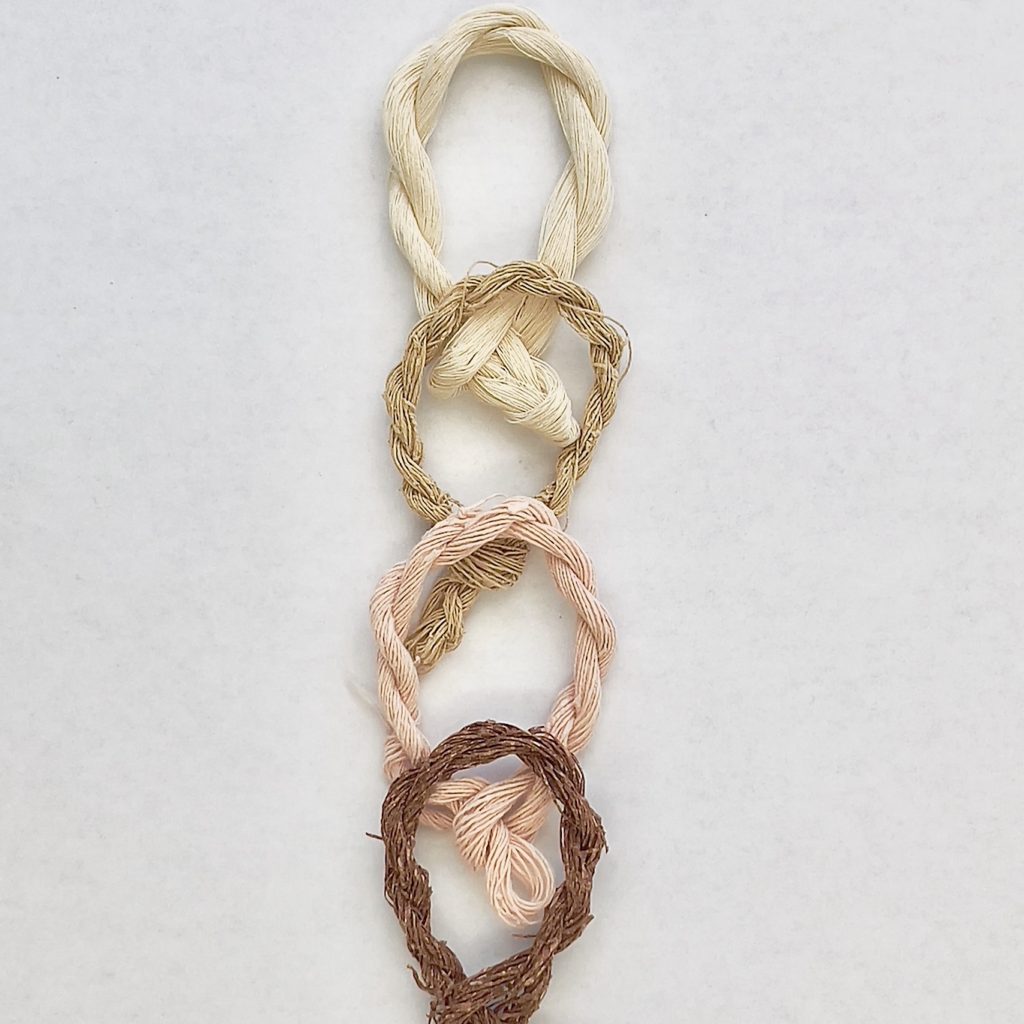
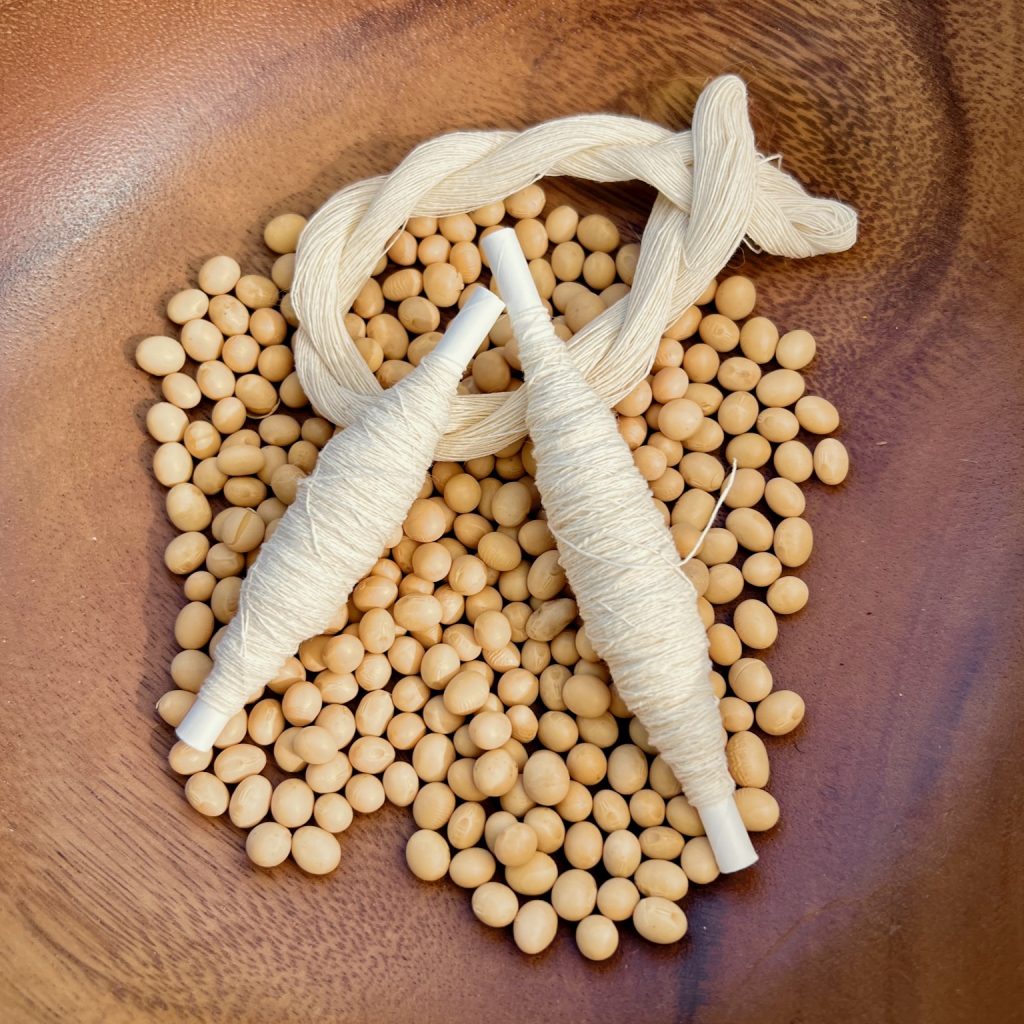
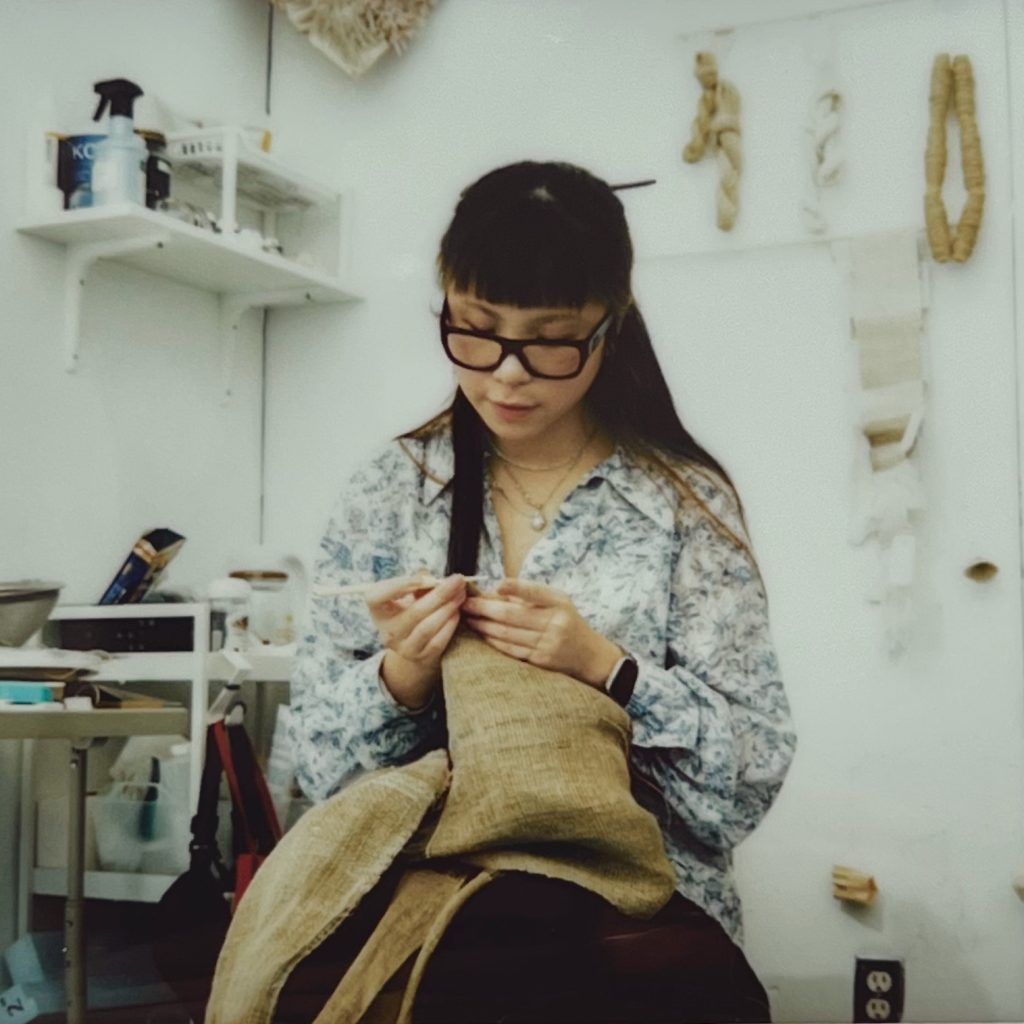
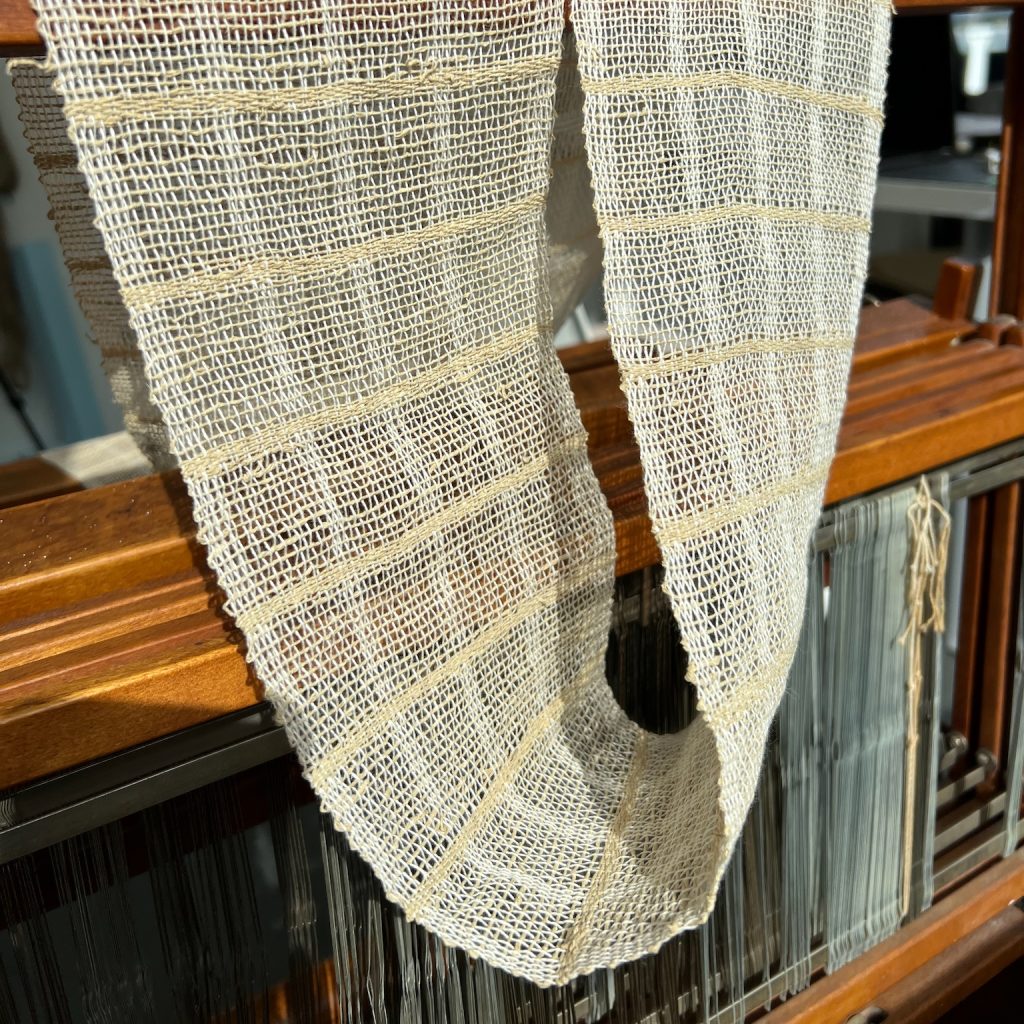
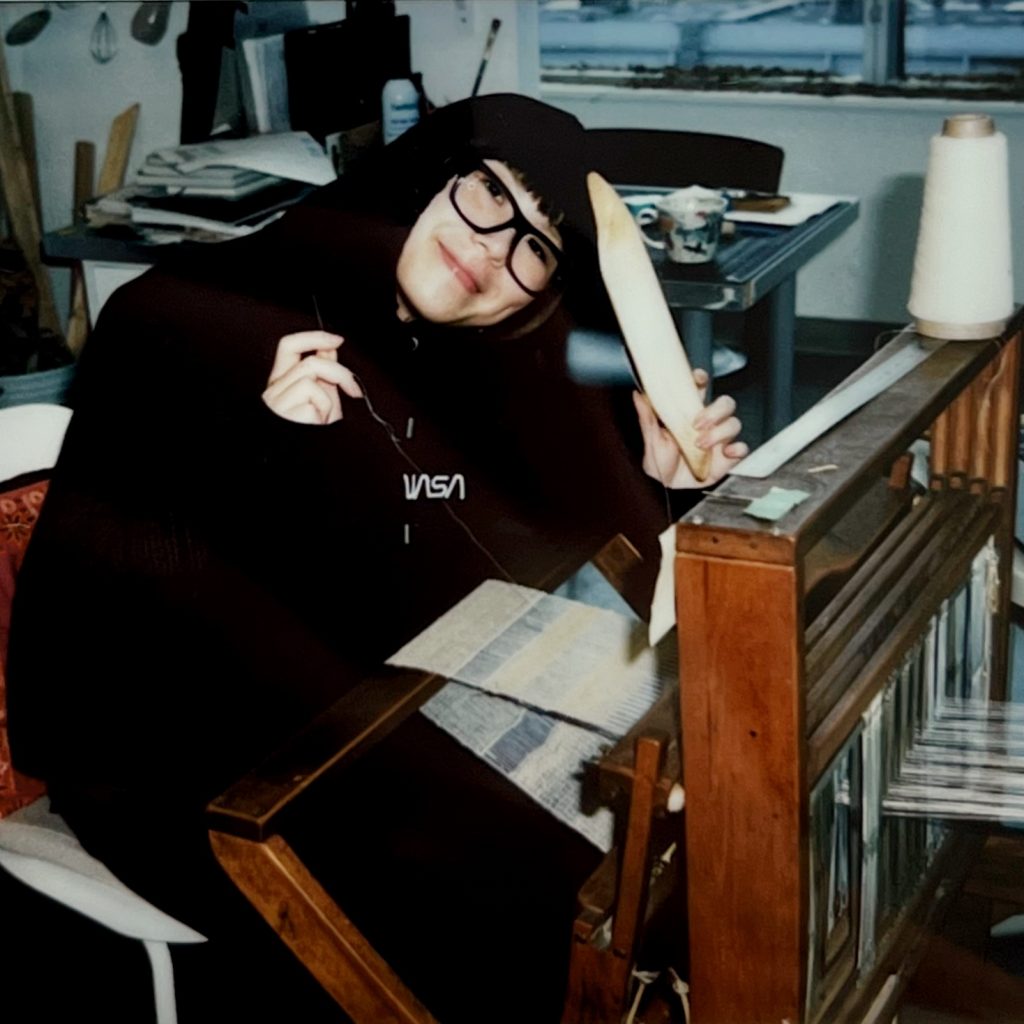
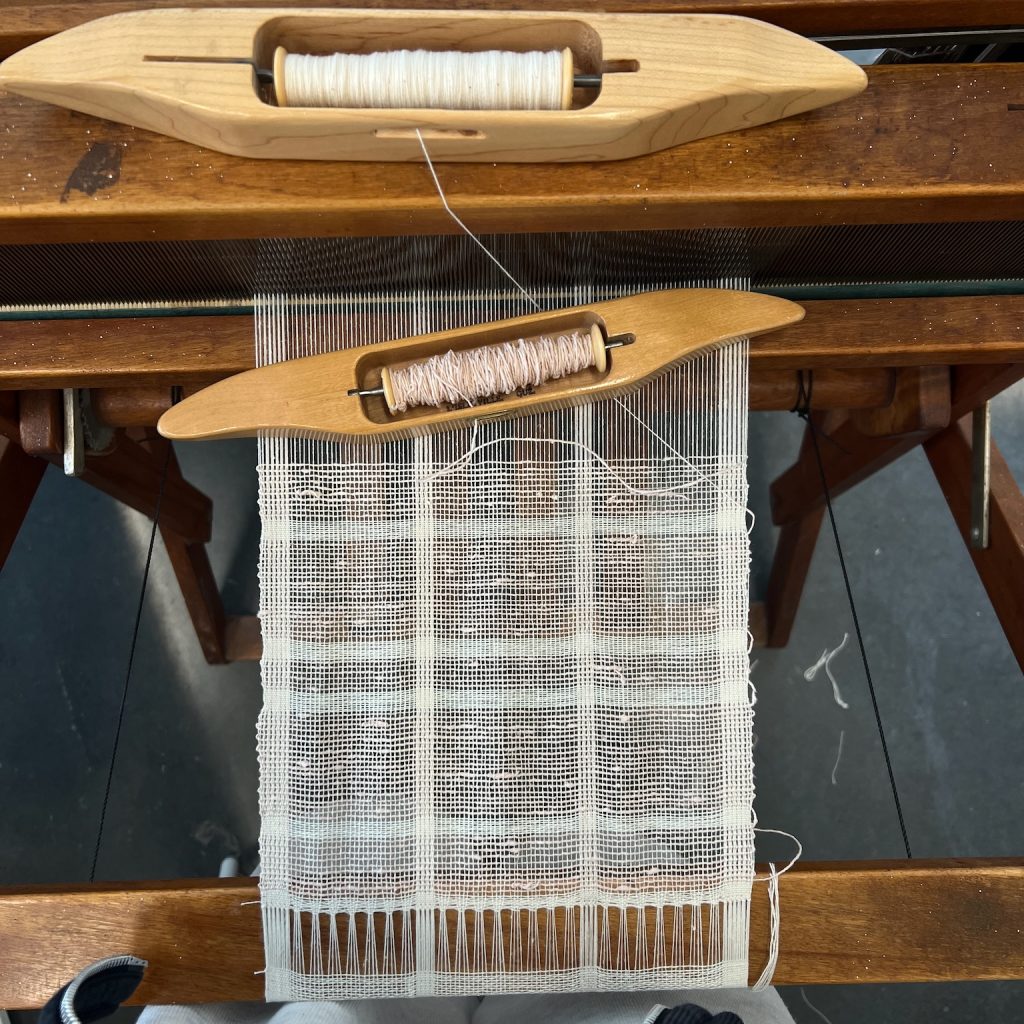
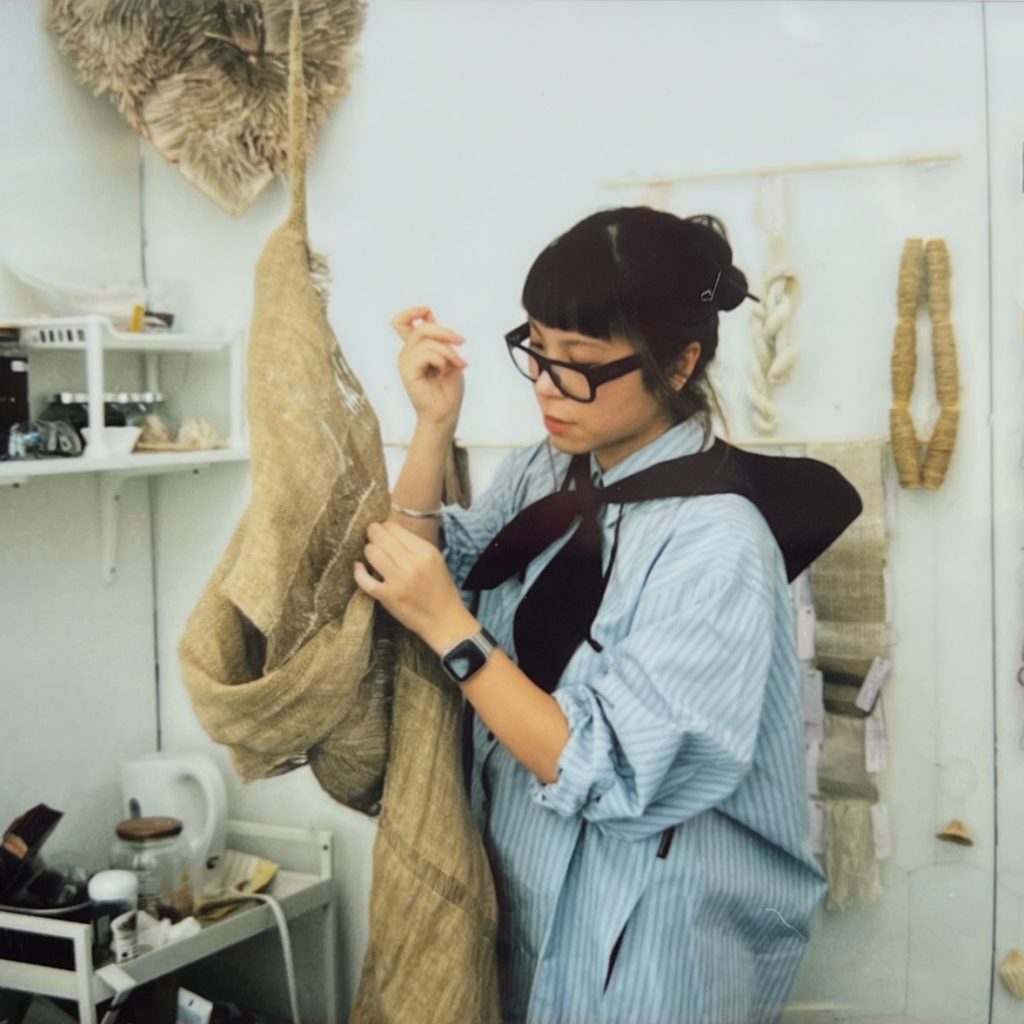
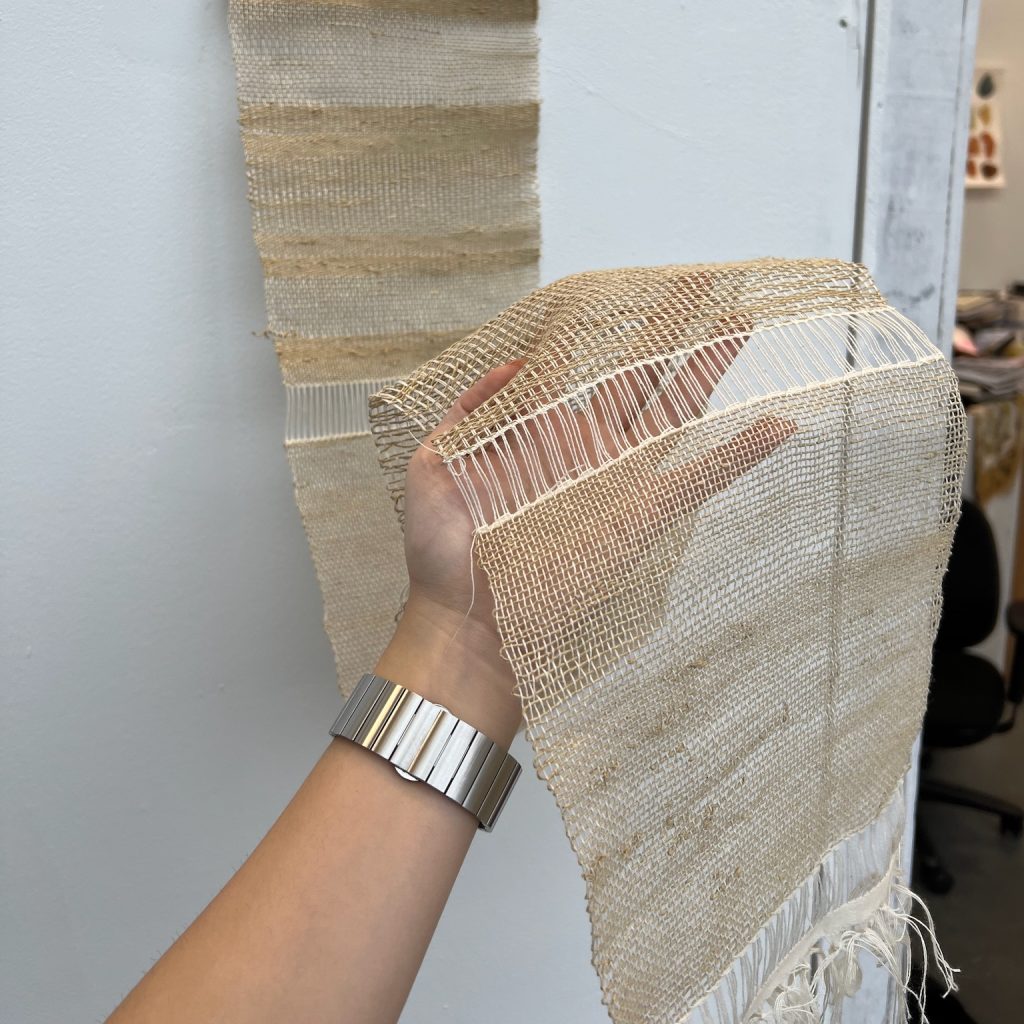
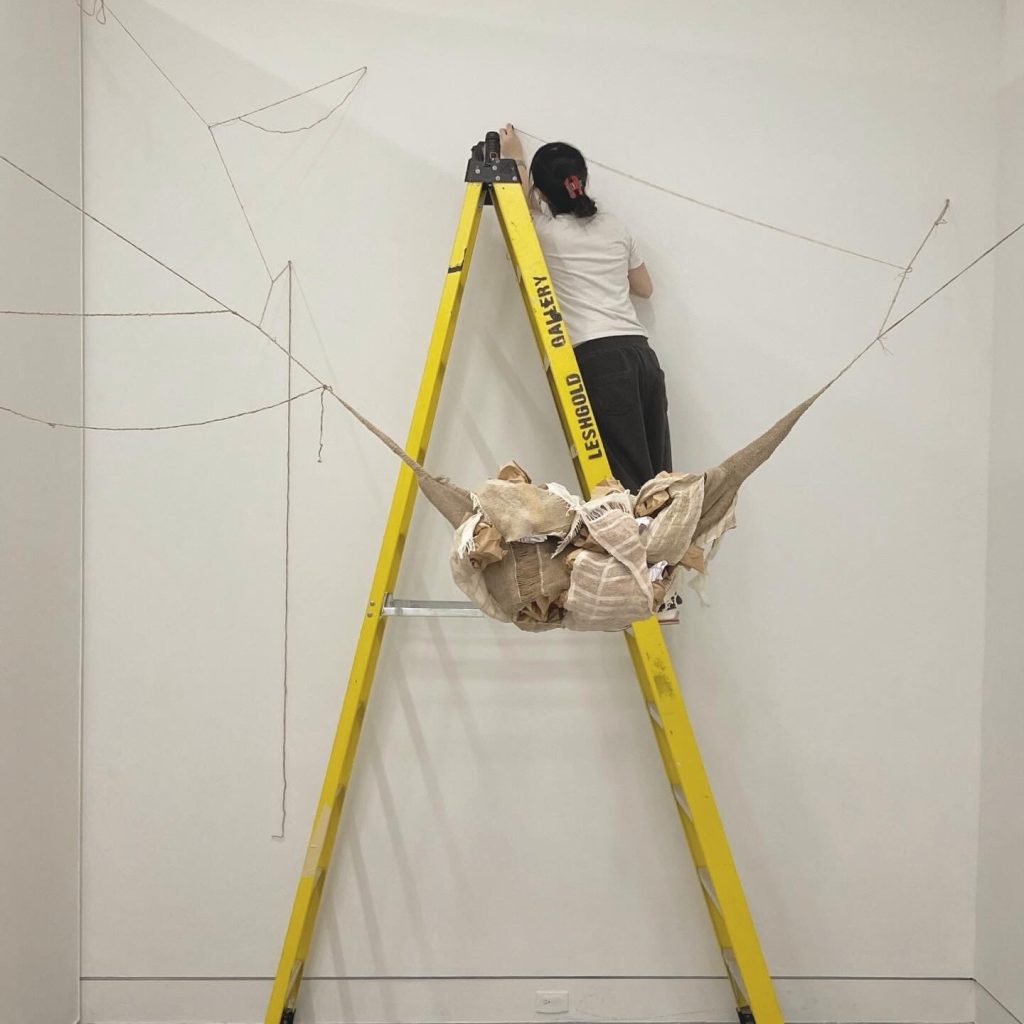
I began by gathering materials, processing them through papermaking and kami-ito making, and then weaving them into a nest. The process of making the nest is a way for me to create space for engagement. Working closely with the fibre materials at hand allows me to forge a relationship with other beings that share the same living environment as me. I honour them by offering my time and labour. I see working collaboratively with different natural materials in my practice as my way of grieving the loss of land, providing a portal for me to engage with other beings that also live on this land and to consider how we can coexist during such troubled times.
..
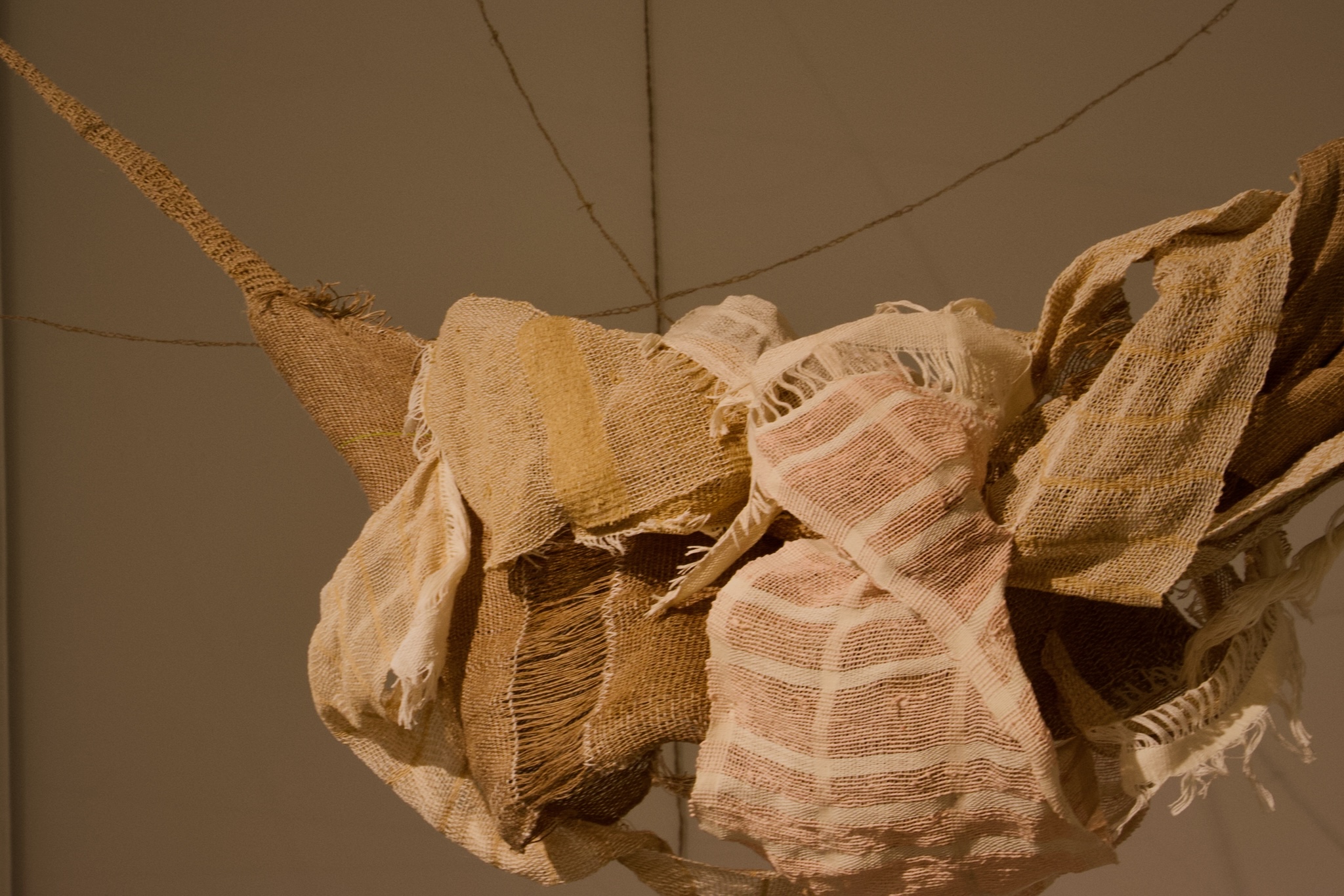
..
Through material exploration in relation to the craft theory of collaboration, I see my craft practice as an inquiry into the interconnectedness of human and non-human beings within the context of environmental decline. It serves as a metaphor for a larger, more critical conversation about our relationship with the natural world. Moreover, it suggests a framework for us to engage with the world in a way that is based on mutual respect, curiosity, and openness to the unknown without overpowering each other.
..
